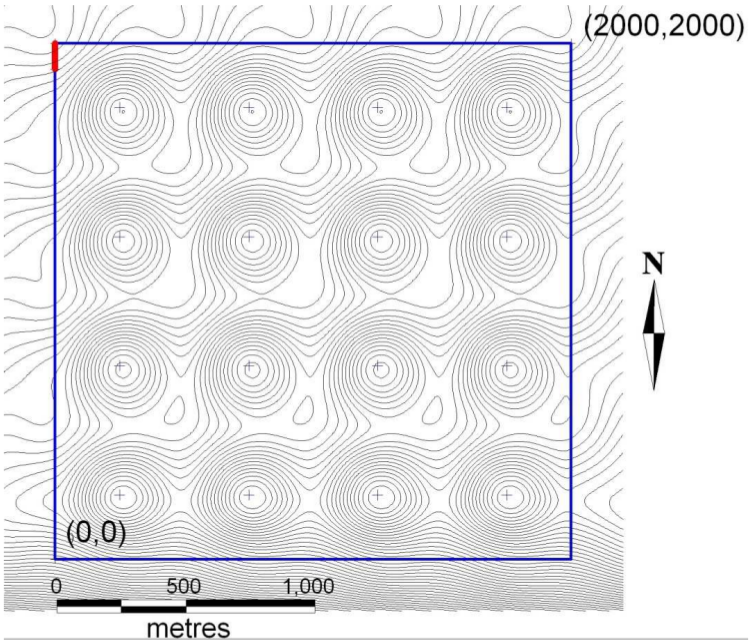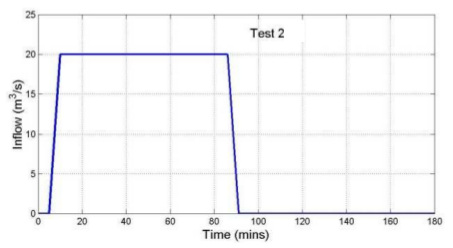UK EA benchmark 2 (Water Module)
This page contains the test case 2 of the UK benchmark named Test 2 – Depression filling as well as its results generated by the Water Module in the Tygron Platform.
The test has been designed to evaluate the capability of a package to determine inundation extent and final flood depth, in a case involving low momentum flow over a complex topography.
Description
The area modelled, shown in Figure (a), is a perfect 2000 m x 2000 m square and consists of a 4 x 4 matrix of ~0.5 m deep depressions with smooth topographic transitions. The DEM was obtained by multiplying sinusoids in the North to South and West to East directions and the depressions are all identical in shape. An underlying average slope of 1 : 1500 exists in the North to South direction, and of 1 : 3000 in the West to East direction, with a ~2m drop in elevation along the North-West to South-East diagonal.
The inflow boundary condition is applied along a 100m line running South from the North Western corner of the modelled domain, see Figure (a).
A flood hydrograph with a peak flow of 20m 3 /s and time base of ~85mins is used. The model is run for 2 days (48 hours) to allow the inundation to settle to its final state.
Boundary and initial conditions
- Inflow along the red line in Figure (a). Location and tables provided as part of dataset.
- All other boundaries are closed.
- Initial condition: Dry bed.
Parameter values
- Manning’s n: 0.03 (uniform)
- Model grid resolution: 20m (or ~10000 nodes in the area modelled)
- Time of end: model is to be run until time t = 48 hours
Technical setup
The provided ascii height file named test1DEM.asc is first imported. It has a cell size of 2m, while the test is expected to run on a 10m grid. Therefore, it will be automatically rescaled by the grid rasterizer. The resulting rescaled asc file is packed in the down below.
In order to regulate the water level according to the water level graph, we used the following setup: On gridcells with x = 1 and x = 2 Inlet objects were placed. Each inlet had its own grid cell. The inlets were configured as:
- External area (m2): 1 000 000 000;
- Water level (m): 1;
- Inlet Q (m) :
| time (hrs) | inlet Q (m3/s) |
|---|---|
| 0, | 1000, |
| 11 | 1000 |
| 11 + 1 sec | -1000 |
| 22 | -1000 |
- Threshold (m): dynamic;
The threshold array was set using a .csv-file that approximated there water level over time. It is approximated since our water levels remain the same for a given period of time (no linear interpolation between time key - values). However, this setup proved accurate enough. The inletthresholds.csv-file can be found in the zip-file below.
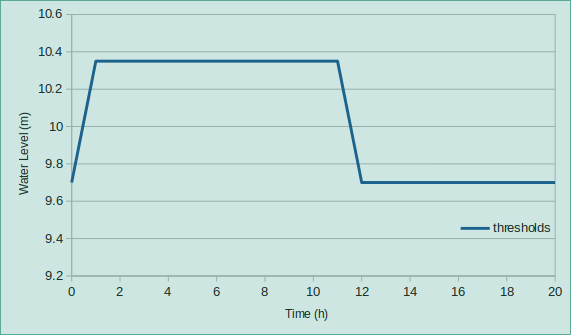
Output as required
- Software package used: Tygron Platform
- Numerical scheme: FV (Kurganov, Bollerman, Horvath)*
- Specification of hardware used to undertake the simulation:
- Processor: Intel Xeon @2.10GHz x 8,
- RAM 62.8 GiB,
- GPU: 2x NVidia 1080
- Operating system: Linux 4.13
- Time increment used: adaptive:
- Grid resolution: 10 m.
- Simulation time:
- Remaining volume water:
Measured point graphs are displayed below:
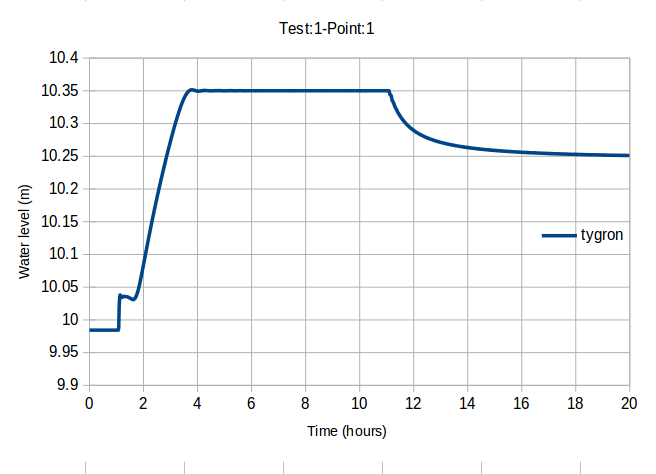
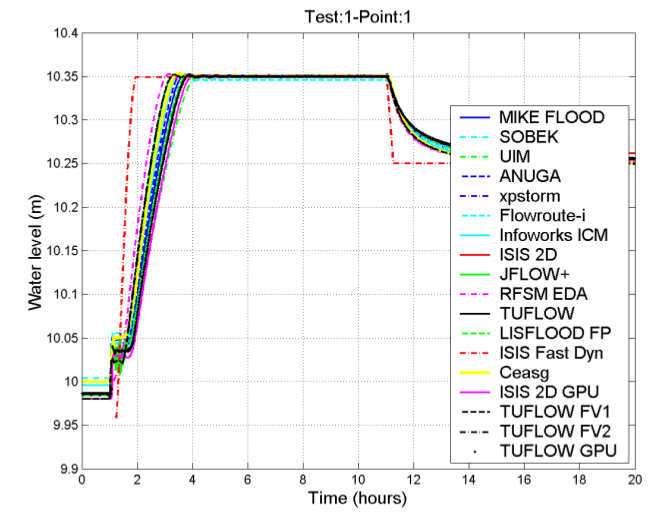
- Graph of point 1 generated by the Tygron Platform on the left and generated by others on the right.
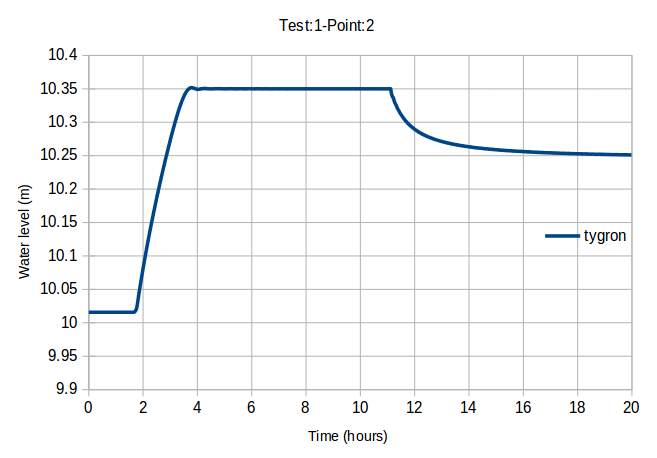
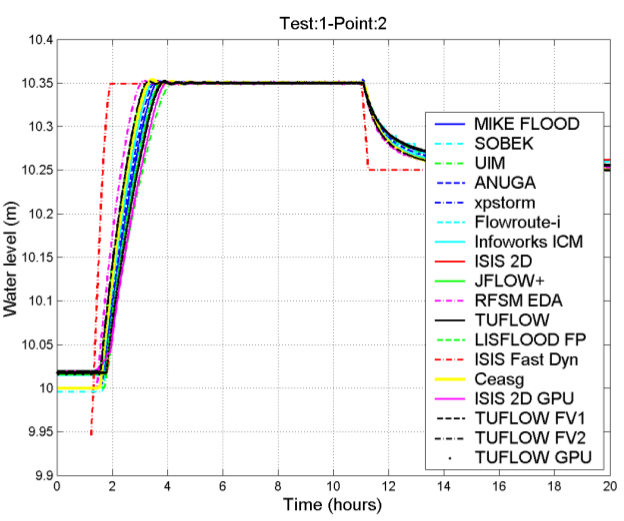
- Graph of point 1 generated by the Tygron Platform on the left and generated by others on the right.
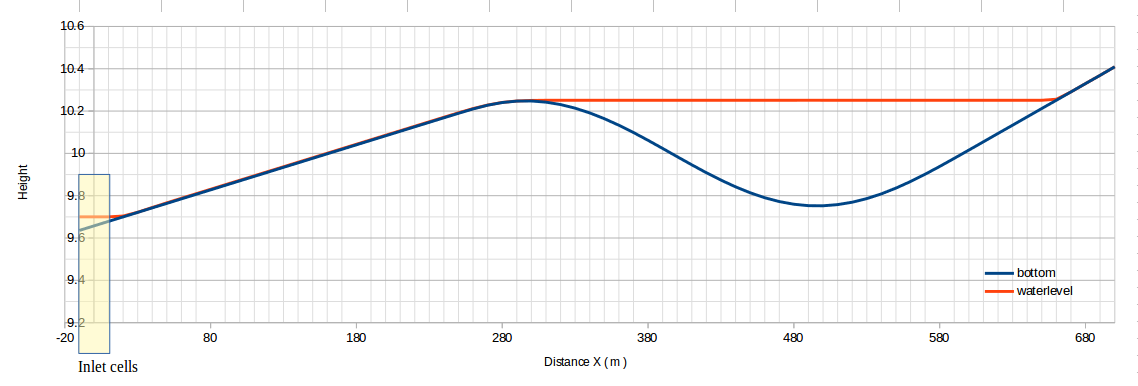
- Slice of the situation in the x -direction, generated by the Tygron Platform.
Notes
- Tests are run with multi gpu setup. For small cases like this, running it on a single gpu is actually faster: 17 seconds, which is +- 40% compared to 2.
